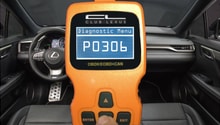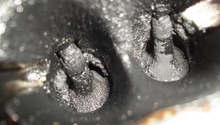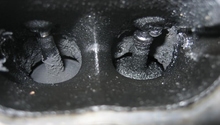Lexus: Why is My Car Losing Power?
Loss of power or noticeable hesitation while driving can be an early warning sign of serious engine issues to come. Learn what to look for to keep your Lexus running right below.
This article applies to the Lexus IS, GS, ES, RX (2005-2014).
Hesitation and loss of power are signs that the engine isn't getting the proper mixture of air and fuel—the two things it needs to make power. If one of these ingredients is low, the engine won't be able to generate as much power and will feel sluggish.

Materials Needed
- Techron
- Towels
- Socket set
Step 1 - Check for diagnostic trouble codes
Diagnostic trouble codes are the car's way of recording when a component is malfunctioning. Generally a loss of power will be accompanied by a lean or misfire code. Pull the code using a code reader or by visiting the dealership or a local auto parts store.

Step 2 - Check engine for water
This step only applies if you've recently washed your engine and the problem developed quickly after that. When washing the motor there is always the chance of water getting somewhere it shouldn't. If you have the time to spare, let it air dry for a couple of days to try to eliminate any water. The other option is to start pulling out the spark plugs; water likes to collect in the spark plug holes and will need to be dried out. Driving with wet spark plugs will cause them to burn out and could possibly cause an engine fire.
Pro Tip
Avoid a wet engine by hand washing the engine bay and its parts. If that's not an option, covering the wiring and connectors with plastic bags while washing your car will help.

Step 3 - Reset the ECU
The computer goes through a learning cycle over time as you drive the car and it tries to adapt the engine and transmission to the way you drive. If you rarely hit wide open throttle (WOT), the engine will learn that you drive the car softly and thus will adjust for that. This can give the feeling of power loss when you actually go to WOT. To reset the ECU all you need to do is disconnect the negative battery cable for a couple minutes and reattach it.
(Related Discussion: How to Reset ECU - ClubLexus.com)

Step 4 - Check for carbon buildup
This is a well known issue on Lexus models with direct injection. Carbon builds up in the top part of the motor and the throttle body, causing clogs and power loss. It's recommended to hit WOT a couple times a week to help burn off the excess carbon as this issue is more seen in cars that are driven softly.
Another way to check for carbon buildup is to open up the throttle body. If it's dirty, there is definitely carbon build up. This fix is best left to a mechanic as it requires tearing down the top end of the motor to do a full cleaning.
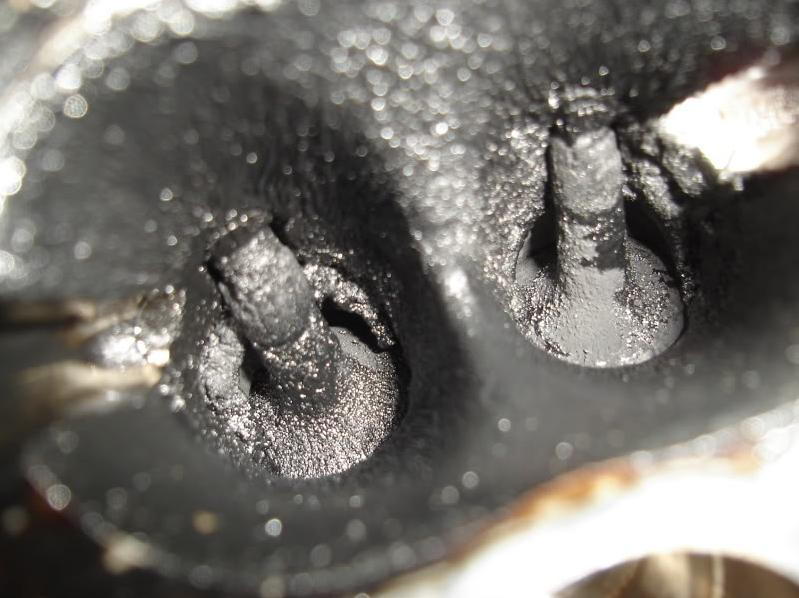
Step 5 - Check for clogged fuel injectors
Clogged fuel injectors can also cause a sluggish feeling by starving the motor for fuel. This problem will also be accompanied by a misfire code once it reaches a stage where the engine can't adjust for the lower fuel anymore. The simple way to diagnose this is by adding a bottle of Chevron Techron to the gas next time you fill up. After about thirty miles of driving it should help to start clean out the injectors. However, depending on their condition, they may require replacement. It's also recommend to have the fuel injectors flushed every 30k miles to help prevent them from clogging up.

Figure 5. Clogged injectors. 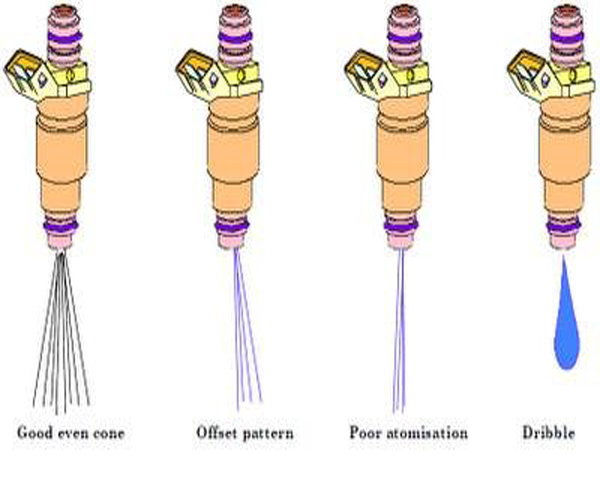
Figure 6. Failing injector spray patterns.
Related Discussions
- Lexus Misfire After Power Washing - ClubLexus.com
- Lexus IS Sudden Power Loss with VSC/TRAC Lights (Limp Home Mode) - ClubLexus.com
- Lexus Intermittent Power Loss - ClubLexus.com
- Lexus with Dirty Injectors/Valves Loses Power - ClubLexus.com
- Lexus 4GR-FSE Carbon Buildup Thread - ClubLexus.com

